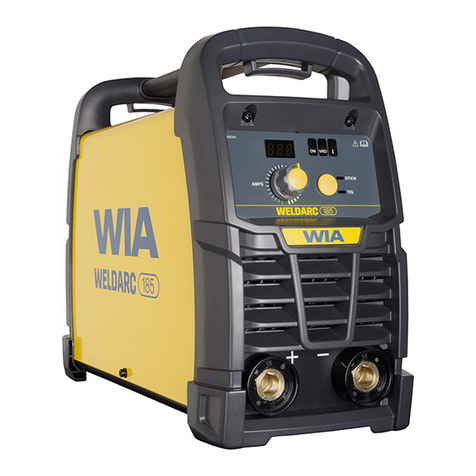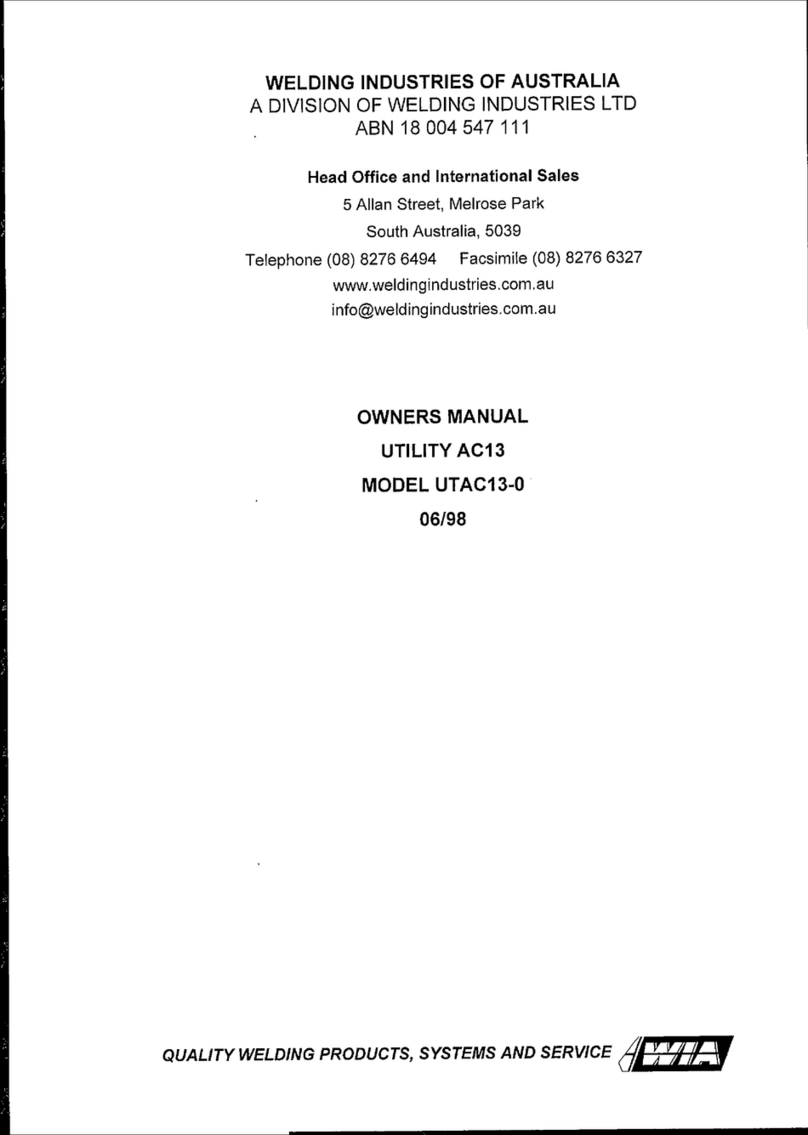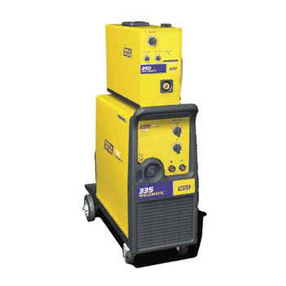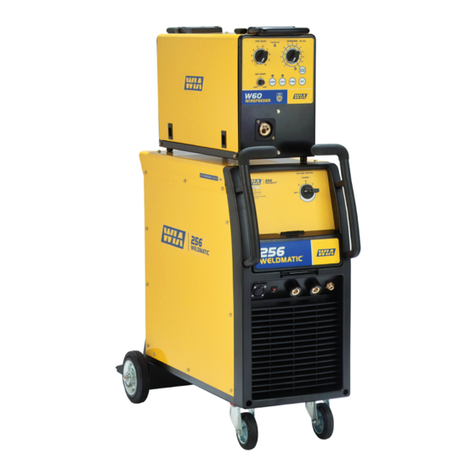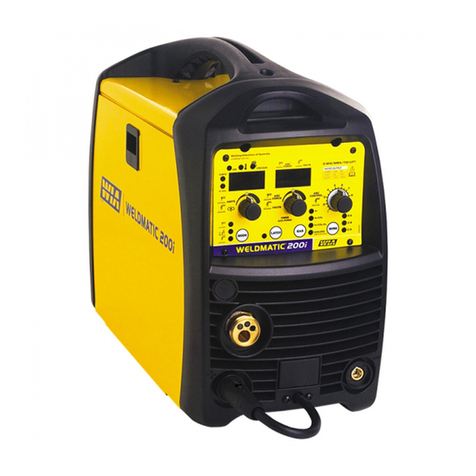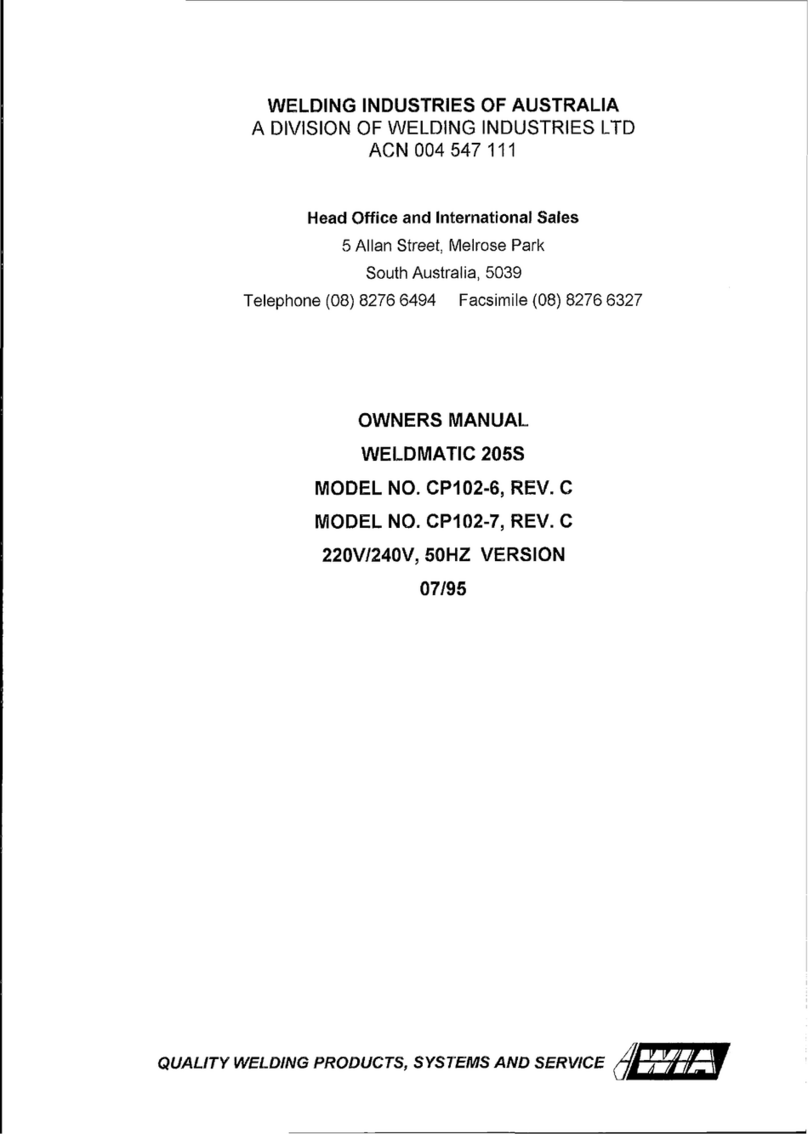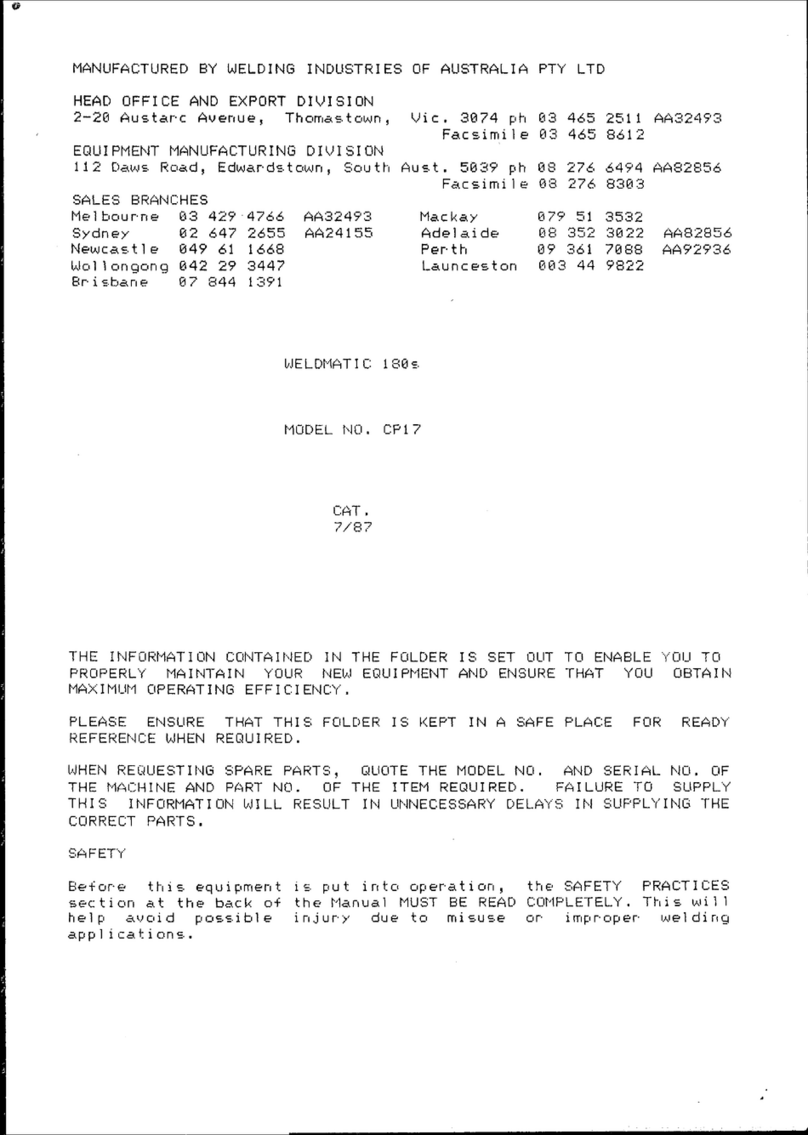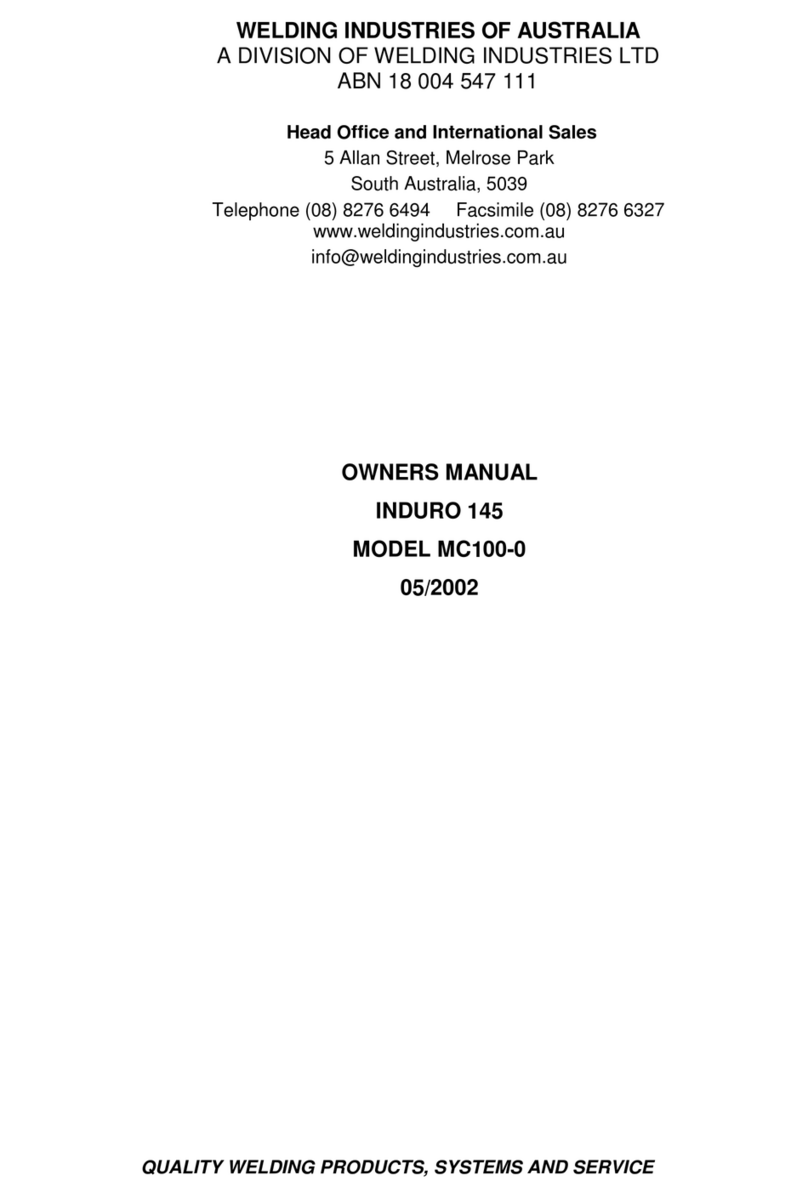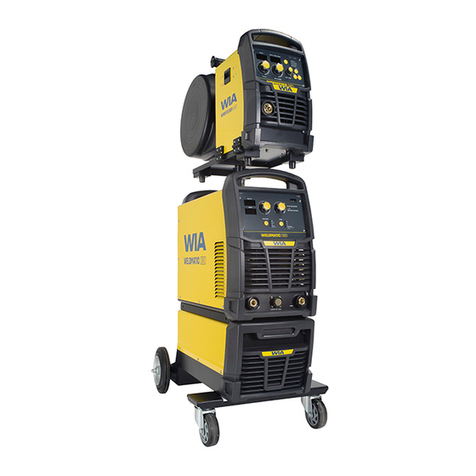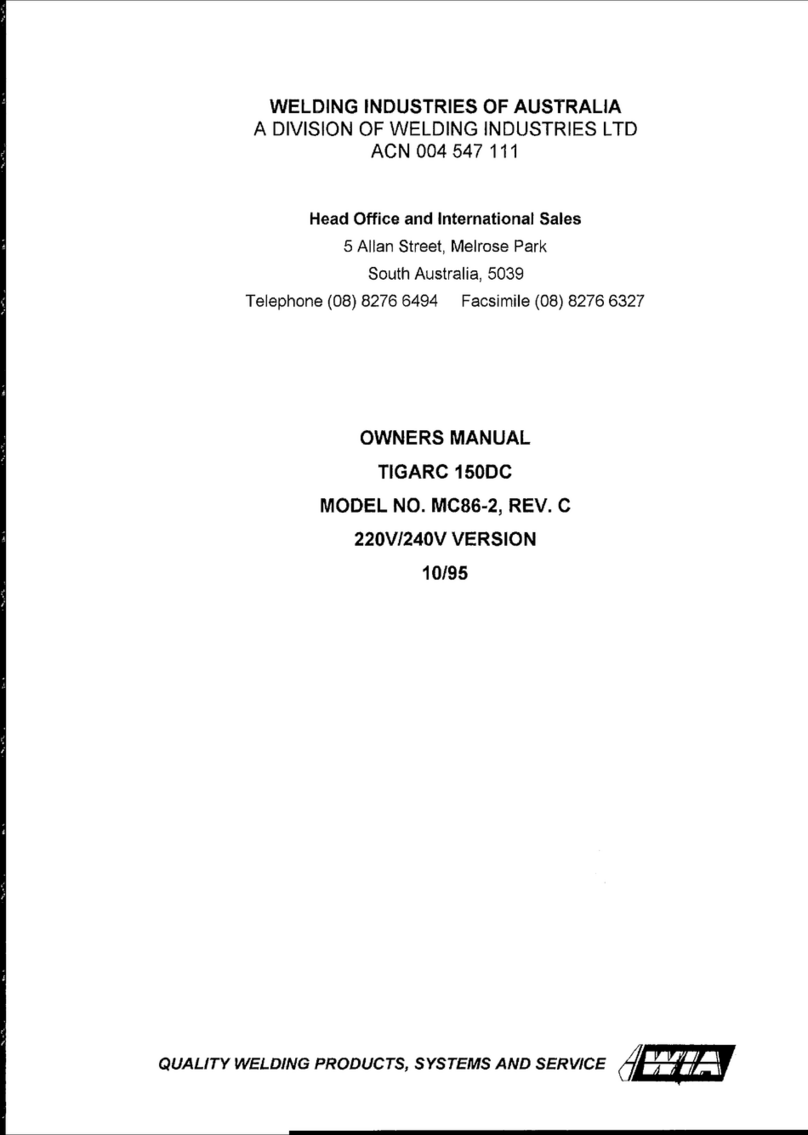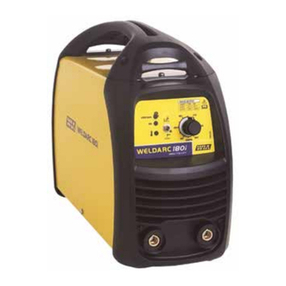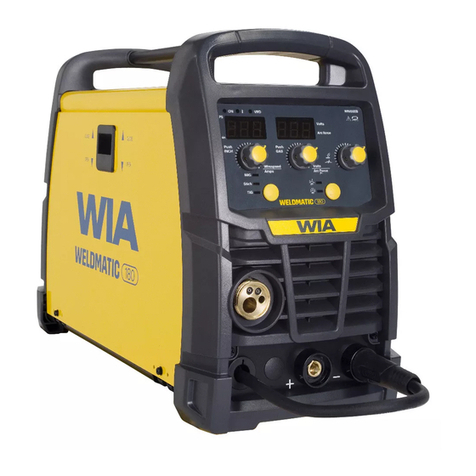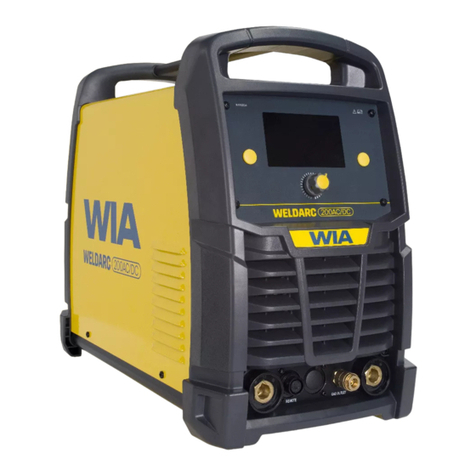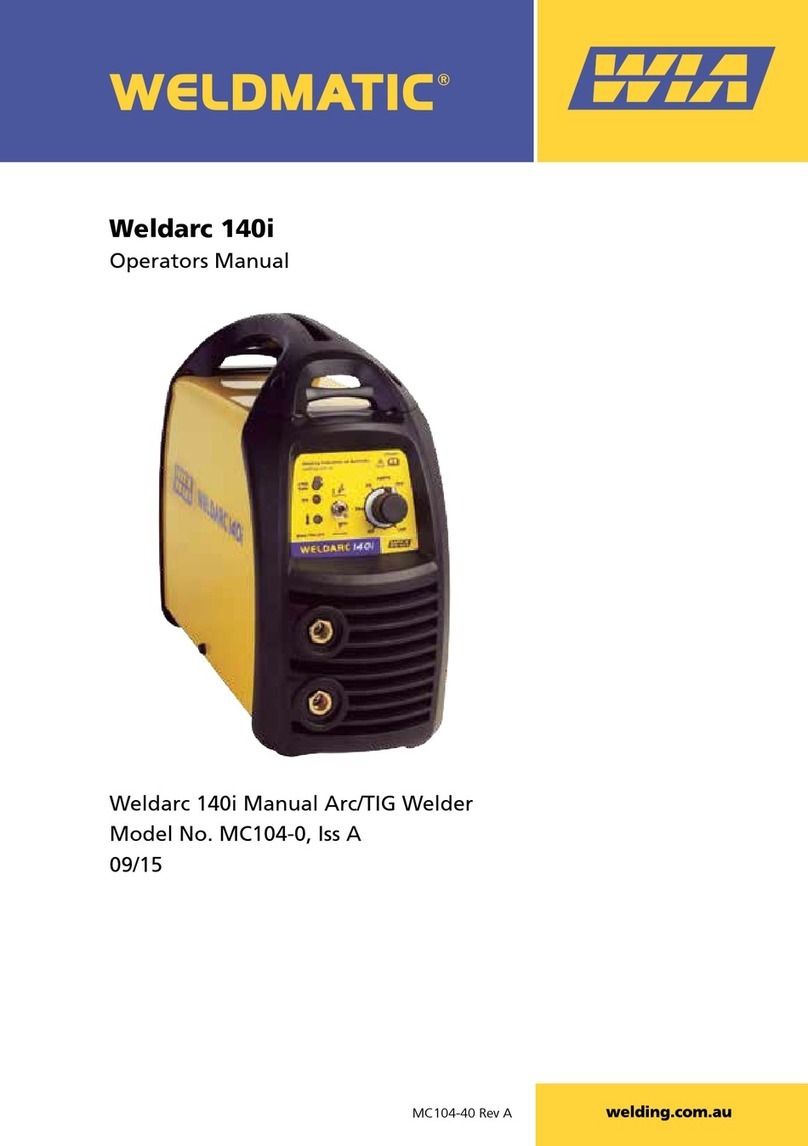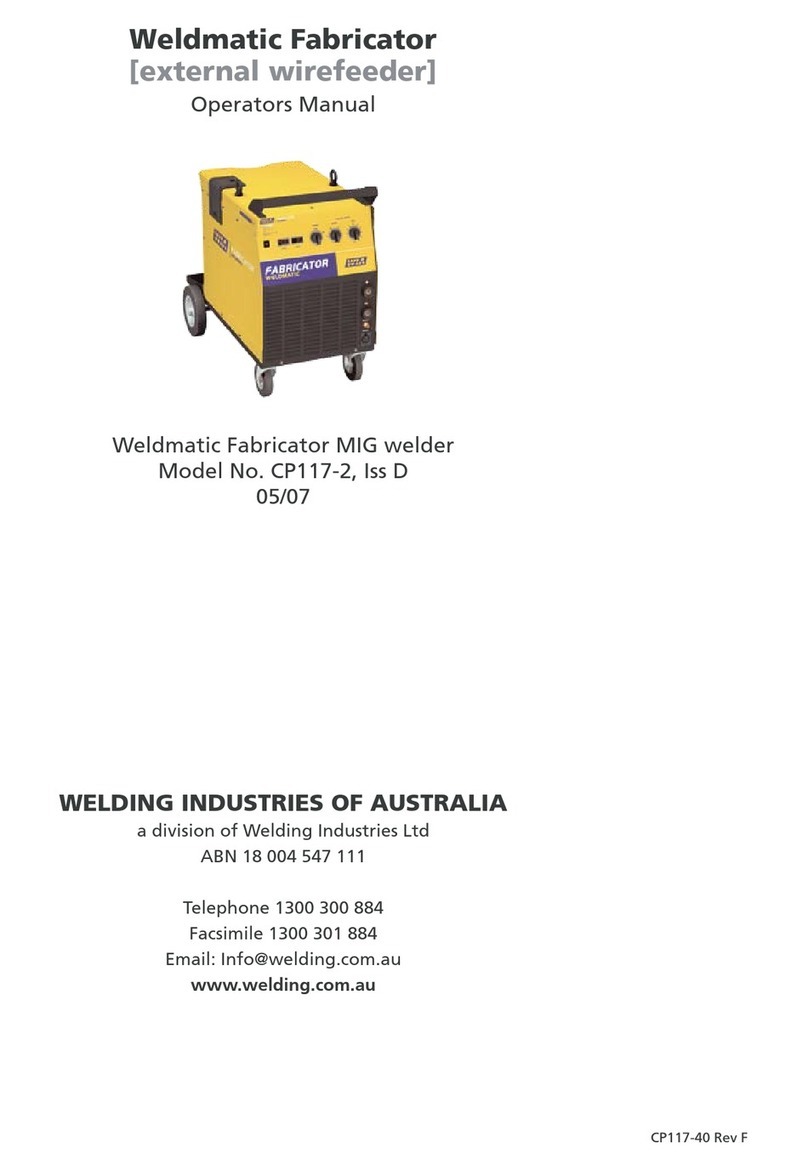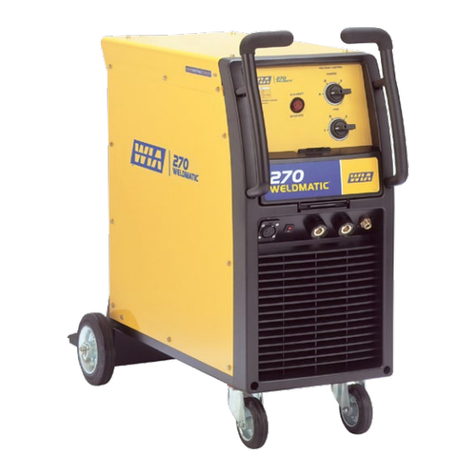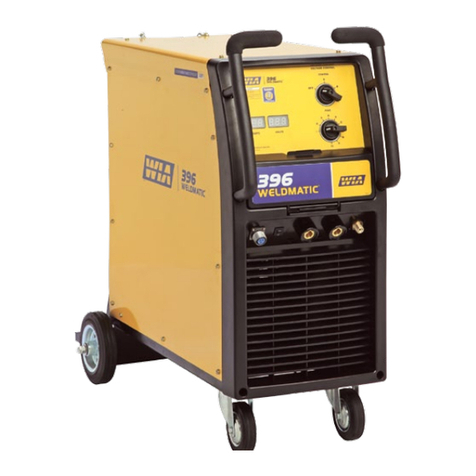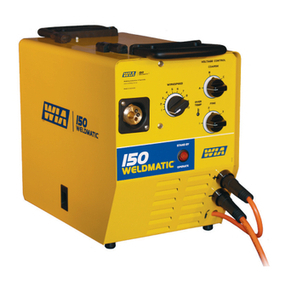
page
18
WELDARC
400
MANUAL
Vapours from chlorinated solvents can be decomposed by the heat of the arc (or flame) to form
PHOSGENE,
a
highly toxicgas, and lung andeye irritating products.The ultra-violet (radiant)energyof
the arc can also decompose trichlorethylene and perchlorethylenevapors to form phosgene.
Do
not
weld or cut where solvent vapors can be drawn into the welding or cutting atmosphere or where the
radiant energy can penetrate to atmospheres containing even minute amounts of trichlorethylene or
percholorethylene.
FIRE
AND
EXPLOSION
PREVENTION.
Beaware that flyingsparks or falling slagcan pass through cracks, along pipes, throughwindows
or doors,andthrough wall or flooropenings,
out
of sightof the operator.Sparksandslagcan travel
up
to
10
metres from thearc.
Keep equipment clean and operable, free of oil, grease, and (inelectricalparts)ofmetallic
partlcles thatcancauseshort circuits.
If
combustiblesare present in the workarea,
do
NOT weld or cut.Movethe work
if
practicable, to
an areafree of combustibles. Avoid paint spray rooms,dip tanks, storageareas, ventilators.
If
the work
can not be moved, move combustibles at least
10
metres away out
of
reach of sparks and heat;or
protect against ignition with suitable and snug-fitting fire-resistantcoversor shields.
Walls touching combustibles on opposite sides should not be welded on
or
cut. Walls, ceilings,
andfloor near work should be protectedby heat-resistantcoversor shields.
A
person acting as Fire Watcher must be standing by with suitable fire extinguishing equipment
during and forsometime after weldingor cutting
if;
m
Combustibles(includingbuildingconstruction) arewithin
10
metres.
m
Combustiblesarefurther than
l0
metresbut can be ignited bysparks.
m
Openings(concealed or visible)infloors
or
walls within
10
metresmay expose combustibles
m
Combustiblesadjacenttowalls, ceilings,roofs,or metal partitionscan beignited by radiantor
After
work
is
done, checkthat area
is
free
of
sparks,glowing embers, andflames.
An tank or drum whichhas contained combustiblescan produce flammable vapors when heated.
Such
a
container mustneverbe weldedonorcut, unless
it
has first been cleaned as describedin
AS.
1674-1
974,
the
S.A.A.
Cutting andWelding SafetyCode. This includes
a
thorough steamor caustic
cleaning
(or
a solvent or waterwashing, depending
on
the combustible’s solubility),followed
by
purging and inerting with nitrogenor carbon dioxide, and using protectiveequipment as recommended
in
AS.1674-1974.
Water-fillingjust below working levelmaysubstitute for inerting.
tosparks.
conductedheat.
Hollowcastings or containers must bevented before welding or cutting.They can explode. Never
weld or cutwhere theair maycontainflammable dust, gas, orliquidvapours.
SHOCK
PREVENTION.
Exposed conductors or other bare metal in the weldlng circuit, or ungrounded electrically alive
equipment can fatally shock a person whose body becomes a conductor. Ensure that the machine is
correctly connectedand earthed.
If
unsurehavemachineinstalled by a qualified electriclan.On mobile
orportable equipment, regularly inspect conditionoftrailing power leads andconnectingplugs.
Repair orreplacedamaged leads.
Fully
insulatedelectrodeholdersshould beused.
Do
not use holderswithprotruding screws.
Fully insulated lock-type connectors should beused
to
join welding cablelengths.
Terminals and other exposed parts of electricalunitsshould have insulatedknobs or covers
securedbefore operation.
